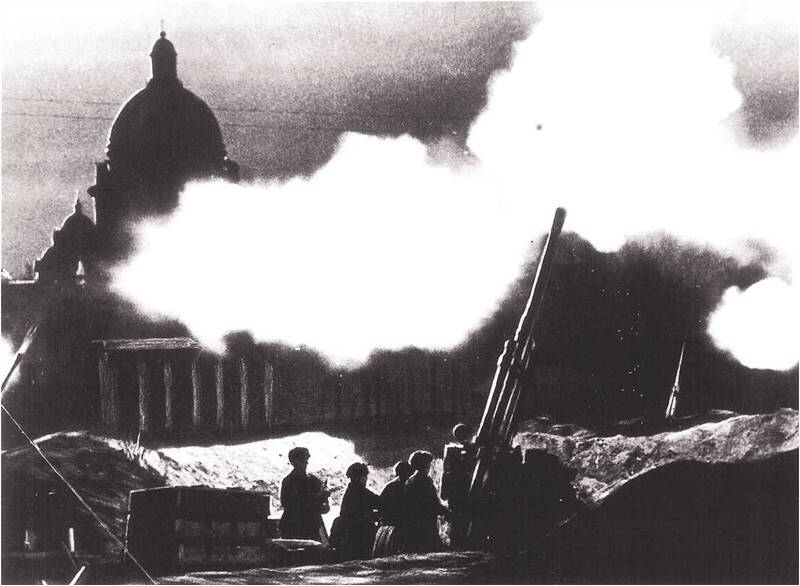
This photograph shows fire of anti-aircraft guns deployed in the neighbourhood of St. Isaac’s cathedral during the defence of Leningrad (now called St. Petersburg, its pre-Soviet name) in 1941. Last week, St. Petersburg marked 75 years since Nazi siege of Leningrad. More than a million people died of hunger, cold or disease or were killed during Nazi bombardments of the city.
The Siege of Leningrad was a prolonged military blockade undertaken from the south by the Army Group North of Nazi Germany against the Soviet city of Leningrad on the Eastern Front in World War II. The Finnish army invaded from the north, co-operating with the Germans until Finland had recaptured territory lost in the recent Winter War, but refused to make further approaches to the city.
The siege started on September 8, 1941, when the Wehrmacht severed the last road to the city. Although Soviet forces managed to open a narrow land corridor to the city on January 18, 1943, the Red Army did not lift the siege until January 27, 1944 - 872 days after it began. The blockade became one of the longest and most destructive sieges in history, and possibly the costliest in casualties suffered. Some historians classify it as genocide.
The Siege of Leningrad was a prolonged military blockade undertaken from the south by the Army Group North of Nazi Germany against the Soviet city of Leningrad on the Eastern Front in World War II. The Finnish army invaded from the north, co-operating with the Germans until Finland had recaptured territory lost in the recent Winter War, but refused to make further approaches to the city.
The siege started on September 8, 1941, when the Wehrmacht severed the last road to the city. Although Soviet forces managed to open a narrow land corridor to the city on January 18, 1943, the Red Army did not lift the siege until January 27, 1944 - 872 days after it began. The blockade became one of the longest and most destructive sieges in history, and possibly the costliest in casualties suffered. Some historians classify it as genocide.

